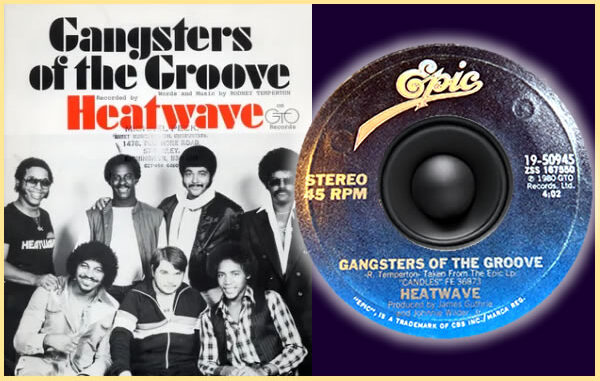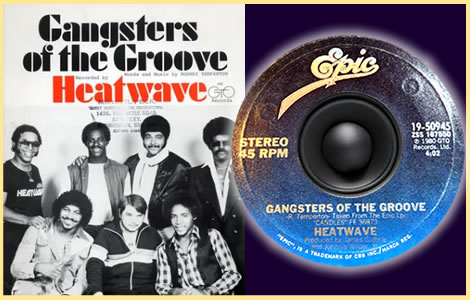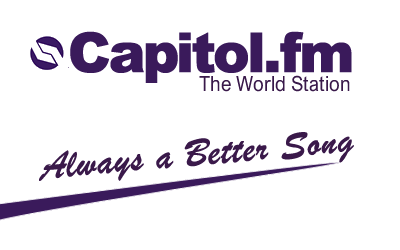
“Gangsters of the Groove” is a hit single by the British-American funk and disco band Heatwave. Released in 1980, the song exemplifies the band’s signature blend of R&B, soul, and funk, contributing to their lasting impact on the music scene.

To understand the success and significance of “Gangsters of the Groove,” it’s essential to explore the origins of Heatwave, the song’s chart performance, and the cultural context of the radio stations that played it.
The Formation of Heatwave
Heatwave was formed in 1975 by Johnnie Wilder Jr., an American serviceman stationed in the United Kingdom. Wilder, who had a powerful and soulful voice, teamed up with British songwriter and keyboardist Rod Temperton.
The band’s lineup eventually included guitarist Eric Johns, bassist Mario Mantese, drummer Ernest “Bilbo” Berger, and Wilder’s brother, Keith Wilder. Rod Temperton’s songwriting and arranging skills played a crucial role in shaping Heatwave’s sound, contributing to their distinctive fusion of funk, soul, and disco.
Temperton, in particular, emerged as a prolific songwriter, penning some of Heatwave’s biggest hits, including “Boogie Nights,” “Always and Forever,” and “The Groove Line.”
His talent was later recognized when he was recruited by Quincy Jones to write for Michael Jackson, contributing to iconic tracks like “Rock with You” and “Thriller.”
The Success of “Gangsters of the Groove”
Released as a single from their fourth studio album, “Candles,” “Gangsters of the Groove” showcased Heatwave’s ability to craft infectious dance tracks with catchy hooks and tight instrumentation.
The song’s funky bassline, rhythmic guitar riffs, and lively brass section made it a hit on dance floors and radio stations alike.
In the United States, “Gangsters of the Groove” achieved moderate success. It reached number 21 on the Billboard R&B chart and number 110 on the Billboard Hot 100.
While it didn’t become a massive crossover hit, it solidified Heatwave’s reputation as a consistent presence in the R&B and funk scene.
In the United Kingdom, the song enjoyed greater success, peaking at number 19 on the UK Singles Chart. Heatwave had already established a strong following in the UK with previous hits, and “Gangsters of the Groove” added to their list of popular tracks.
The song’s infectious groove and upbeat energy resonated with audiences, making it a favourite on dance floors and radio playlists.
The song also found success in Europe, particularly in countries like the Netherlands and Belgium, where Heatwave had a dedicated fan base.
The band’s international appeal was evident as “Gangsters of the Groove” charted in various European countries, further expanding their influence.
Radio Stations and Cultural Context
In the late 1970s and early 1980s, radio played a crucial role in shaping musical tastes and promoting new releases. In the United Kingdom, the BBC’s Radio 1 was a dominant force in popular music.
Established in 1967, Radio 1 catered to a young audience and featured influential DJs like John Peel, Tony Blackburn, and Dave Lee Travis.
These DJs had the power to make or break a song, and their endorsement could propel a track to national success. “Gangsters of the Groove” received significant airplay on Radio 1, helping it reach a broad audience and climb the charts.
In the United States, the radio landscape was more fragmented, with various stations catering to different genres and regions.
Urban contemporary stations, which played R&B, funk, and soul music, were instrumental in promoting Heatwave’s music. Stations like WBLS in New York, KDAY in Los Angeles, and WGCI in Chicago were key players in the urban music scene.
These stations helped “Gangsters of the Groove” gain traction in major metropolitan areas and reach the R&B audience.
Additionally, the rise of disco in the late 1970s created a fertile ground for dance-oriented tracks like “Gangsters of the Groove.”
Clubs and discos across the US and Europe featured the song in their playlists, contributing to its popularity and ensuring that Heatwave’s music remained relevant on dance floors.
Capitol fm recreates the legend of the disco floor with ‘Gangster of the Groove’
“Gangsters of the Groove” stands as a testament to Heatwave’s enduring appeal and their ability to create music that transcends genres and eras.
The song’s success in multiple countries highlights the band’s international reach and the universal appeal of their music.
Heatwave’s influence can be seen in the work of numerous artists who followed in their footsteps. Their blend of funk, soul, and disco elements paved the way for future generations of musicians, and their impact on the music industry is undeniable.
Rod Temperton’s songwriting genius, in particular, left an indelible mark on popular music, influencing the sound of the 1980s and beyond.
In conclusion, “Gangsters of the Groove” by Heatwave is more than just a hit single; it’s a reflection of a band’s journey, the musical landscape of the late 1970s and early 1980s, and the enduring power of funk and disco.
From the formation of Heatwave to the song’s success across the US, UK, and Europe, “Gangsters of the Groove” remains a shining example of the era’s vibrant and diverse musical culture.
